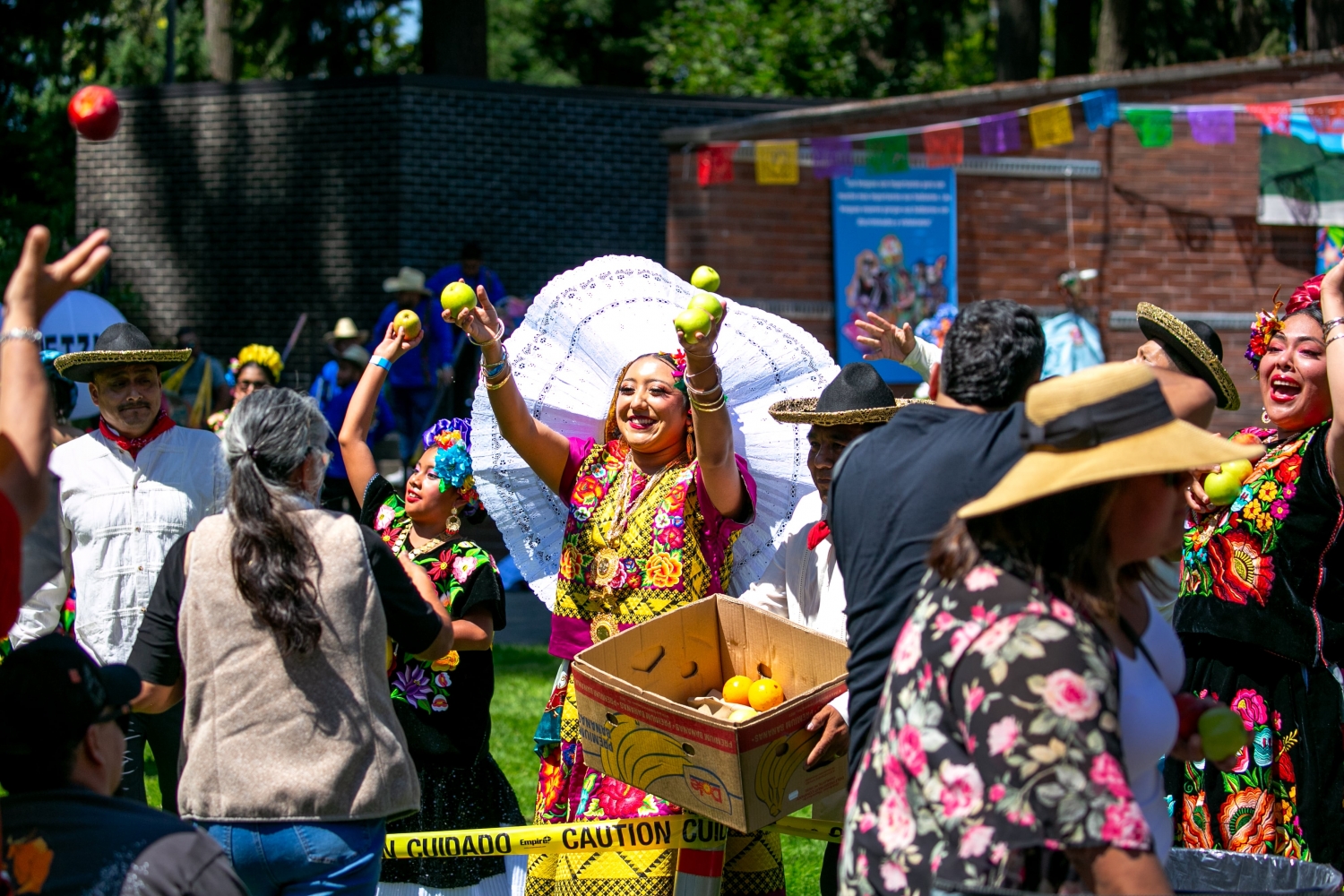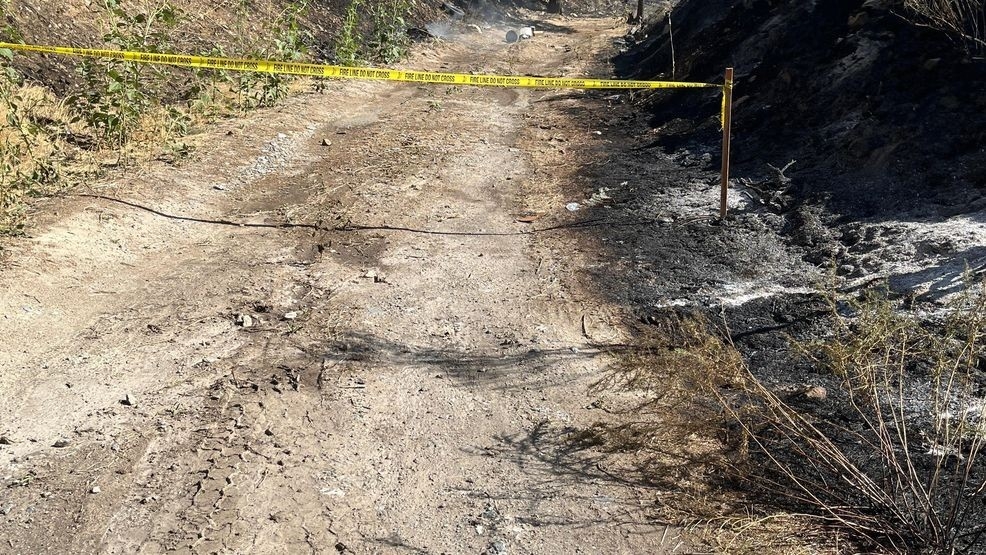

Published on: 08/15/2025
This news was posted by Oregon Today News
Description
It was a sunny, hot afternoon in Hillsboro’s Shute Park last Saturday.
Vendors selling textiles and crafts lined the perimeter, while the smell of smoke and tortillas rose out of food trucks.
Some community members sought respite in the shady fringes of the park. Others positioned themselves right in the center with sunglasses and sombreros, umbrellas perched over their folding chairs.
And the parade began.
Adorned with thick, detailed suit jackets, horned wooden masks and fur-fringed pants, the first group of dancers — representing la danza de los diablos, or the dance of the devils — stepped and stomped around the park, waving whips above their heads.

This dance is one of the most popular and anticipated parts of this gathering, attracting Indigenous Oaxaqueños across state lines to this park in Washington County.
La Guelaguetza is an annual cultural celebration in Hillsboro. It features traditional dances, foods and crafts specific to about eight distinct Indigenous cultures from Oaxaca, Mexico.
It’s modeled after La Guelaguetza festival, which has taken place in Oaxaca since pre-Hispanic times, before the 16th century, when Indigenous Oaxaqueños worshipped Centéotl, the goddess of maíz or corn, and offered dances, food and rituals in her honor.
The term La Guelaguetza comes from the Zapotec, a pre-Hispanic Indigenous community located primarily in the central valley of Oaxaca.
The parade was just one of the performances that happened throughout the day in the park, which included danza de los diablos, danza de la pluma (dance of the feather), danza de la culebra (dance of the serpent), flor de piñas (flower of pineapple) and more.
Each performance was accompanied by at least one of the event’s four live bands playing música de viento, or wind music — music made with wind instruments.
Three of those four bands hail from Oaxaca itself: Banda Santa Ines is from the Guadalupe Nundaca region of Oaxaca; Banda la Perlita del Sur is from Santiago Apóstol in central Oaxaca; and Banda Herencia de Oaxaca is from Santiago Juxtlahuaca in Oaxaca. The fourth band, Rondalla Sentimiento Latino, is from Salem, Oregon.
Adán Merecias, one of the main organizers of the event through the TierrAgua organization, moved to Oregon from La Mixteca region of western Oaxaca. The term Guelaguetza is multifaceted, but at its core, it means gathering and celebrating as a community, Merecias said.

At the end of different performances, dancers and volunteers distributed donated fruits to community members.
It was a tangible reminder of what La Guelaguetza stands for — sharing resources and supporting each other.
According to Merecias there is a large population of Oaxaqueños in Oregon, particularly in the Woodburn area, in Clackamas County and in Washington County, with the most common Oaxacan groups being the Zapotec, Mixtec and Trique.
The enormous diversity of Oaxaqueños was reflected in the all-Oaxacan performer lineup at Hillsboro’s La Guelaguetza, which included over a dozen cultural groups from the Pacific Northwest:
- Grupo Folklórico Guelaguetza
- Casa de la Cultura Tlanese
- Alma Oaxaqueña
- Chinas Oaxaqueñas de Oregon
- Corazon Oaxaqueño
- Rubios Rancho de Silva
- Grupo Colibri
- Balet Folklórico de Colores
- Grupo Santiago Naranjas
- Grupo San Mateo Tunuchi
- Grupo Raza Unida
- Grupo Tierra Mixteca
- Elegancia de Notepec
- Legado de Asunción
- Orgullo Mixteco
- Mixtecos Unidos

For Gabriela Ruiz, who danced at La Guelaguetza with the Chinas Oaxaqueñas de Oregon, and her mom Rosa Ruiz, the celebration is a chance to express their Indigenous Oaxacan roots and also learn more about other regions.
“I feel like we’re ready to meet other pueblos in Oaxaca. We’re from Valles Centrales, I’ve never seen their presentations before,” Gabriela Ruiz said. Valles Centrales are the Central Valleys in Oaxaca, which are surrounded by other Oaxacan pueblos, or villages or regions.
Andrea Ramirez, who danced the Pinotepa Nacional with several other girls Saturday afternoon, is from Michoacán, a Mexican state located slightly west of Oaxaca. She and the rest of her group traveled from the Eugene - Springfield area to perform in Hillsboro that day.
“We all come from different school districts, but we’re all close in age,” Ramirez said, walking over to the stage minutes before their group’s performance. “And yeah, we all love to dance. And we all love to represent our culture and our customs and everything like that, too. We’re really happy to be here.”
Her favorite part of La Guelaguetza is being able to see the different styles of dancing, dresses and masks from each region of Oaxaca.
Oaxacan clothing has been passed down through generations, Merecias said.
“My mom, she was taught by my grandmother how to do embroidery and a few other things with arts and crafts. And that has been passed on,” he said. “So, right now, she still makes blouses and what we call wayaberas, which are shirts for men, that she makes every so often.”

When Merecias was growing up, Oaxacan-specific events were rare. He wants to change that for his daughter.
“Mexico is very big and very diverse, but oftentimes obviously representation is not present. And I’m a dad, I have an 11-year-old daughter,” he said. “So over the past few years, I think one of those things is that I want to make sure that she understands the connection to community, but also the connection to language and culture.”
And there is a strong connection.
La danza de los diablos, in particular, is one part of La Guelaguetza in Hillsboro that attracts Mixtec community members from Washington and California, not just Oregon — even as they have their own regional Guelaguetza festivals, like Seattle’s Grupo Cultural Oaxaqueño.
“They don’t really need an invitation, because if they know that one group is going to be performing in Oregon, they sort of join together to dance,” Merecias said. “So you’ll notice that that’s one of the largest groups just because they have so many connections outside of Oregon.”

The celebration is also an effort to create community and preserve the cultures of Indigenous Oaxaqueños, who are sometimes labeled as Latino, a broad umbrella term that often lumps very distinct communities together.
For Merecias, it’s important to be intentional when describing people — especially Oaxaqueños, who often face racial discrimination within Mexico because of their Indigenous identity.
“We have our own languages, our own sort of ways of clothing, traditions are different, food is different,” Merecias said. “And that is what we’re trying to highlight: the importance of preserving our languages, our traditions, our culture.”
Racial discrimination against Indigenous Oaxaqueños in Mexico is not really discussed, Merecias said. Because of that, he said many of the vendors and even hosts of La Guelaguetza tend to be community members involved with advocacy and nonprofits.
“It’s more than just a performance, music and art,” Merecias said of the festival. “It’s also mentioning that you are able to succeed in this land even though there’s obstacles and barriers.”
Angela Gonzalez, who had set up a sponsor table at La Guelaguetza representing Santos Immigration Law, said one of their immigration lawyers, Esmeralda Santos, was emceeing part of the event. Their table saw a lot of traffic throughout the event, which lasted from 11 a.m. to 6 p.m.
“We’ve been pretty busy since this morning. It’s kind of just non-stop, but it feels very nice because I think a lot of people are scared right now,” Gonzalez said. “So it feels nice just being able to be here and give them the support.”

This year, La Guelaguetza took place against the backdrop of ramped-up raids by Immigration and Customs Enforcement in Oregon and across the nation — increased targeting that has caused some cultural festivals like Latino Fest in Central Oregon to cancel out of fear for the safety of community members.
Merecias said organizers hadn’t promoted La Guelaguetza as they have in the past to avoid having any unwanted, unkind disruptions.
“We understand that these are not the times that we used to have in the past, right,” he said. “These are different times where community members are being targeted.”
Merecias and other organizers decided to stream the event live for community members who would not be able to attend. And despite rising concerns about the safety of these events, he estimated that a little over a thousand people attended La Guelaguetza on Aug. 9 — a number similar to the amount who attended last year’s festival.
“This is an event where we’re not doing anything wrong,” he said. “We are coming together as a community. We’re coming together to dance. We’re coming together to celebrate. We’re not causing harm to anybody.”
Nobody should be living in fear, Merecias said. In that way, he sees La Guelaguetza as a reminder of what’s important.
“For us, it’s being able to reconnect, celebrate, and continue to collaborate as community members,” Merecias said. “Otherwise, isolating ourselves could have a major impact. We want to make sure that we stay connected in some way or another.”
News Source : https://www.opb.org/article/2025/08/15/la-guelaguetza-indigenous-oaxacan-oaxaquenos-mexico-hillsboro-festival/
Other Related News
08/15/2025
Are you tonights lucky winner Grab your tickets and check your numbers The Mega Millions l...
08/15/2025
Air Canada said that more than 623 flights had been cancelled by Friday evening affecting ...
08/15/2025
The 36-year-old South Korean player shot a 6-under 67 on Friday to take the lead in The St...
08/15/2025
The Department of Energy is proposing a cap on federal reimbursement for state-run energy ...
08/15/2025












